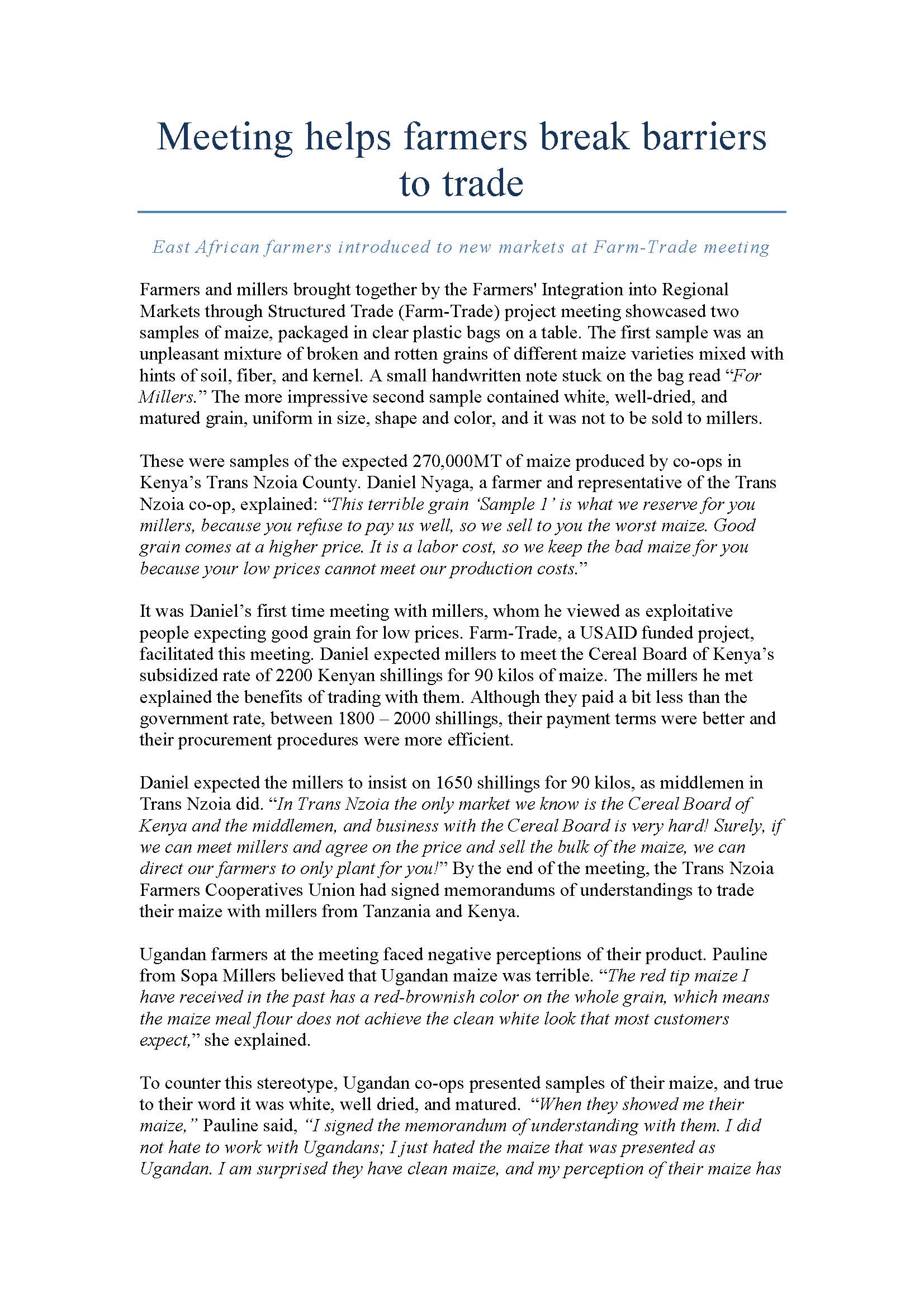Home » Meeting helps farmers break barriers to trade
East African farmers introduced to new markets at Farm-Trade meeting
Farmers and millers brought together by the Farmers' Integration into Regional Markets through Structured Trade (Farm-Trade) project meeting showcased two samples of maize, packaged in clear plastic bags on a table. The first sample was an unpleasant mixture of broken and rotten grains of different maize varieties mixed with hints of soil, fiber, and kernel. A small handwritten note stuck on the bag read “For Millers.” The more impressive second sample contained white, well-dried, and matured grain, uniform in size, shape and color, and it was not to be sold to millers.
These were samples of the expected 270,000MT of maize produced by co-ops in Kenya’s Trans Nzoia County. Daniel Nyaga, a farmer and representative of the Trans Nzoia co-op, explained: “This terrible grain ‘Sample 1’ is what we reserve for you millers, because you refuse to pay us well, so we sell to you the worst maize. Good grain comes at a higher price. It is a labor cost, so we keep the bad maize for you because your low prices cannot meet our production costs.”
It was Daniel’s first time meeting with millers, whom he viewed as exploitative people expecting good grain for low prices. Farm-Trade, a USAID funded project, facilitated this meeting. Daniel expected millers to meet the Cereal Board of Kenya’s subsidized rate of 2200 Kenyan shillings for 90 kilos of maize. The millers he met explained the benefits of trading with them. Although they paid a bit less than the government rate, between 1800 – 2000 shillings, their payment terms were better and their procurement procedures were more efficient.
Daniel expected the millers to insist on 1650 shillings for 90 kilos, as middlemen in Trans Nzoia did. “In Trans Nzoia the only market we know is the Cereal Board of Kenya and the middlemen, and business with the Cereal Board is very hard! Surely, if we can meet millers and agree on the price and sell the bulk of the maize, we can direct our farmers to only plant for you!” By the end of the meeting, the Trans Nzoia Farmers Cooperatives Union had signed memorandums of understandings to trade their maize with millers from Tanzania and Kenya.
Ugandan farmers at the meeting faced negative perceptions of their product. Pauline from Sopa Millers believed that Ugandan maize was terrible. “The red tip maize I have received in the past has a red-brownish color on the whole grain, which means the maize meal flour does not achieve the clean white look that most customers expect,” she explained.
To counter this stereotype, Ugandan co-ops presented samples of their maize, and true to their word it was white, well dried, and matured. “When they showed me their maize,” Pauline said, “I signed the memorandum of understanding with them. I did not hate to work with Ugandans; I just hated the maize that was presented as Ugandan. I am surprised they have clean maize, and my perception of their maize has changed.” Giving Ugandan co-ops the chance to counter negative stereotypes of their maize helped to eliminate their barriers to trade with Kenyan millers.
Issuing Country
Date
Monday, January 25, 2016 - 12:45pm








Comment
Make a general inquiry or suggest an improvement.